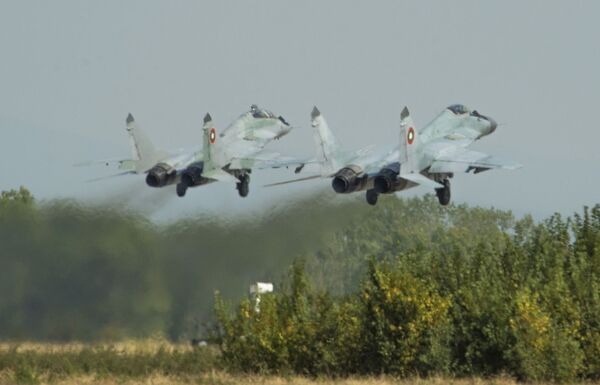
Along with Poland and Slovakia, Bulgaria is a European operator of the MiG-29 combat aircraft (pictured) that the EU is looking to supply to Ukraine to help replace the country's battlefield losses. (Bulgarian Air Force)
The European Union (EU) is to provide the Ukrainian armed forces with combat aircraft to help replace battlefield losses in the face of Russia's renewed invasion of the country.
The High Representative of the Union for Foreign Affairs and Security, Josep Borrell, made the announcement on 27 February, saying that Kyiv had requested the aircraft as part of a wider package of military support from the EU and the West.
“We are going to provide even fighting jets,” Borrell said. “[Kyiv] has been asking us that they need the kind of fighting jets that the Ukrainian [Air Force] is able to operate. We know that some [EU] member states have these kind of planes, and the western borders of Ukraine are still open and several [of these] member states have a border with Ukraine.”
As noted by the EU foreign policy chief, Kyiv is requesting specifically those Soviet-era combat aircraft that the Ukrainian Air Force inherited in 1991 and still operates today. These are the MiG-29 ‘Fulcrum' and Sukhoi Su-27 ‘Flanker' multirole combat aircraft, and the Sukhoi Su-24 ‘Fencer' and Su-25 ‘Frogfoot' ground attack aircraft. Of these, EU member states could supply the MiG-29 and Su-25.
As noted by Janes World Air Forces, the Polish Air Force fields 21 single-seat and six twin-seat MiG-29s; the Bulgarian Air Force fields 11 single-seat and three twin-seat MiG-29s; while the Slovak Air Force fields nine single-seat and two twin-seat MiG-29 aircraft (although only a small number is thought to still be in an airworthy condition). The Bulgarian Air Force also fields six single-seat and two twin-seat Su-25s.
Looking to read the full article?
Gain unlimited access to Janes news and more...
